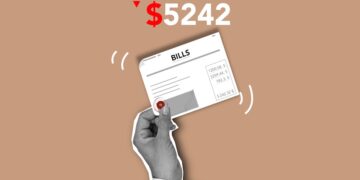Breaking the Cycle: Strategies to Escape the Paycheck-to-Paycheck Trap
Living paycheck to paycheck is a reality for many, but it doesn’t have to be a permanent state. With the right strategies, it’s possible to move from merely surviving to thriving financially. In this article, we’ll explore practical steps to escape the paycheck-to-paycheck trap, enhance your financial stability, and build a brighter, more secure future.
Understanding the Paycheck-to-Paycheck Cycle
The term “living paycheck to paycheck” refers to a financial situation where an individual relies solely on each month’s wages to cover their living expenses, with little or no savings to fall back on. It’s a precarious position to be in, as any unexpected expense can cause significant financial distress.
Common causes include low income, high expenses, lack of budgeting, and inadequate savings. By identifying the root cause in your particular situation, you can tailor a more effective approach to breaking the cycle.
Step 1: Assess and Realign Your Budget
Creating a comprehensive budget is the cornerstone of personal financial management. Start by tracking all your expenses for a month—no matter how small. This insight allows you to identify non-essential expenditures that can be reduced or eliminated.
To enhance your budgeting strategy:
- Analyze your spending: Use budgeting apps or spreadsheets to categorize your expenses. This will give you a clear view of where your money goes, highlighting potential savings areas.
- Set realistic goals: Establish short-term and long-term financial goals. These could range from saving for a rainy day fund to paying off debt.
- Adjust accordingly: Regularly review and adjust your budget as your financial situation changes or as you achieve your goals.
Step 2: Increase Your Income
While cutting costs is crucial, increasing your income can provide a more significant impact on your financial health. Here are a few strategies to boost your earnings:
- Seek opportunities for a raise or promotion: Enhance your skills or take on additional responsibilities at work to qualify for higher-paying positions.
- Consider side jobs or freelancing: Leverage your skills to earn extra money outside your regular job. From online tutoring to freelance writing, opportunities abound.
- Explore passive income streams: Investments, such as real estate or dividend stocks, can generate passive income and help diversify your financial portfolio.
Step 3: Eliminate High-Interest Debt
High-interest debts, such as credit card debt, can cripple your ability to save. Prioritize paying off these debts using strategies like the debt snowball method (paying off debts from smallest to largest) or the debt avalanche method (paying off debts with the highest interest rates first).
Consider consulting with a financial advisor or using debt management plans to consolidate debts and lower interest rates, reducing overall debt faster.
Step 4: Build an Emergency Fund
One of the most critical steps in breaking the paycheck-to-paycheck cycle is establishing an emergency fund. Aim for a fund that covers three to six months of living expenses. Even small, regular contributions can grow over time and offer a financial buffer against unexpected expenses like medical bills or car repairs.
Step 5: Plan for the Future
With immediate financial pressures addressed, it’s time to think long-term. Invest in your future by:
- Setting aside money for retirement: Take advantage of retirement accounts like IRAs or employer-sponsored 401(k)s, especially if they match contributions.
- Investing in education: Whether it’s pursuing further education yourself or setting up a college fund for your children, education is a gateway to better economic opportunities.
- Exploring insurance options: Protect your financial progress with adequate insurance coverage, be it health, life, or property insurance.
Frequently Asked Questions
How much should I save each month?
Aim to save at least 20% of your income each month. If that’s not feasible, start with what you can and increase the percentage as your financial situation improves.
What should I prioritize, debt repayment or saving?
Focus on high-interest debts first, as they cost the most money. Simultaneously, build a modest emergency fund to avoid further debt in case of unexpected expenses.
Can budgeting apps really help?
Yes, budgeting apps like Mint, YNAB (You Need A Budget), or PocketGuard can help track spending, set budgets, and visualize your financial trends, making it easier to stick to your financial goals.
Conclusion
Escaping the paycheck-to-paycheck cycle is challenging but achievable with the right strategies. By reassessing your budget, boosting your income, eliminating debt, and planning for future financial needs, you can establish a more secure financial foundation. Start small, stay consistent, and watch your financial health improve over time.

























































